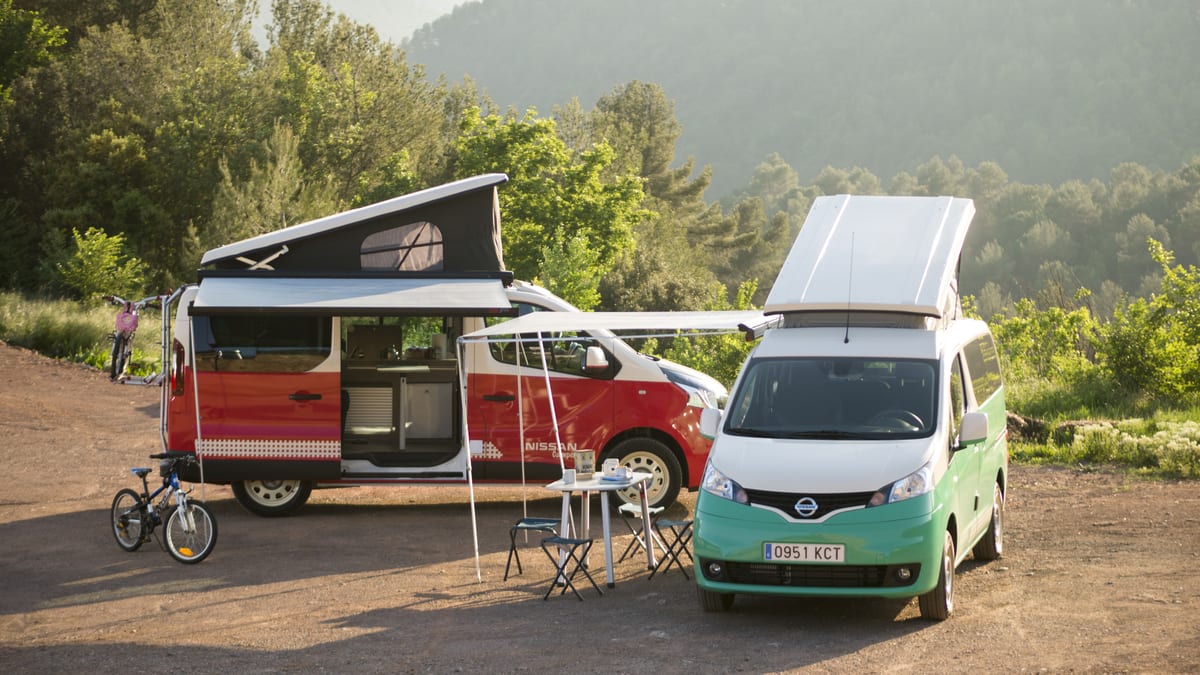
The Japanese car-maker behind the world’s biggest selling electric passenger vehicle, Nissan, has quietly launched an all-electric camper van in Spain.
Unveiled at the Madrid Motor Show last month, the e-NW200 was one of three new camper vans rolled out by Nissan, including ICE counterparts the NV300, the NV200.
The retro-style vans are reminiscent of the tone trend immortalised in Volkswagen’s Kombi Camper, and are kitted out with a kitchenette, in-built heating, bike racks, roll-out shades and a popup roof.

Both vans have room for up to 4 people both in the interior lounge area, and in the NV300 the popup roof allows space for a second bed at night time.
“The new Nissan Camper range will allow the most adventurous to have a balcony with views of the most incredible places in the world, and enjoy the essence of traveling with family or friends,” said Francesc Corberó, Communications Director of Nissan Iberia .
Available for the moment in Spain, only, customers are able to order either van online with a range of customised options. Those considering the electric version will be able to zip around Europe covering up to 200km per charge, powered by the e-NV200’s 40kWh battery.
Unfortunately, driving an all-electric camper around Australia is currently out of reach – unless you’re a dab hand at electric conversions.
With no plans as yet to bring the e-NV200 anytime soon to Australia, nor the all-electric Winnebago which was released a few months ago, it may just be that the only option is to follow the lead of the fortunate few who own a Tesla Model S, and convert your electric car into a 5-star tent.








